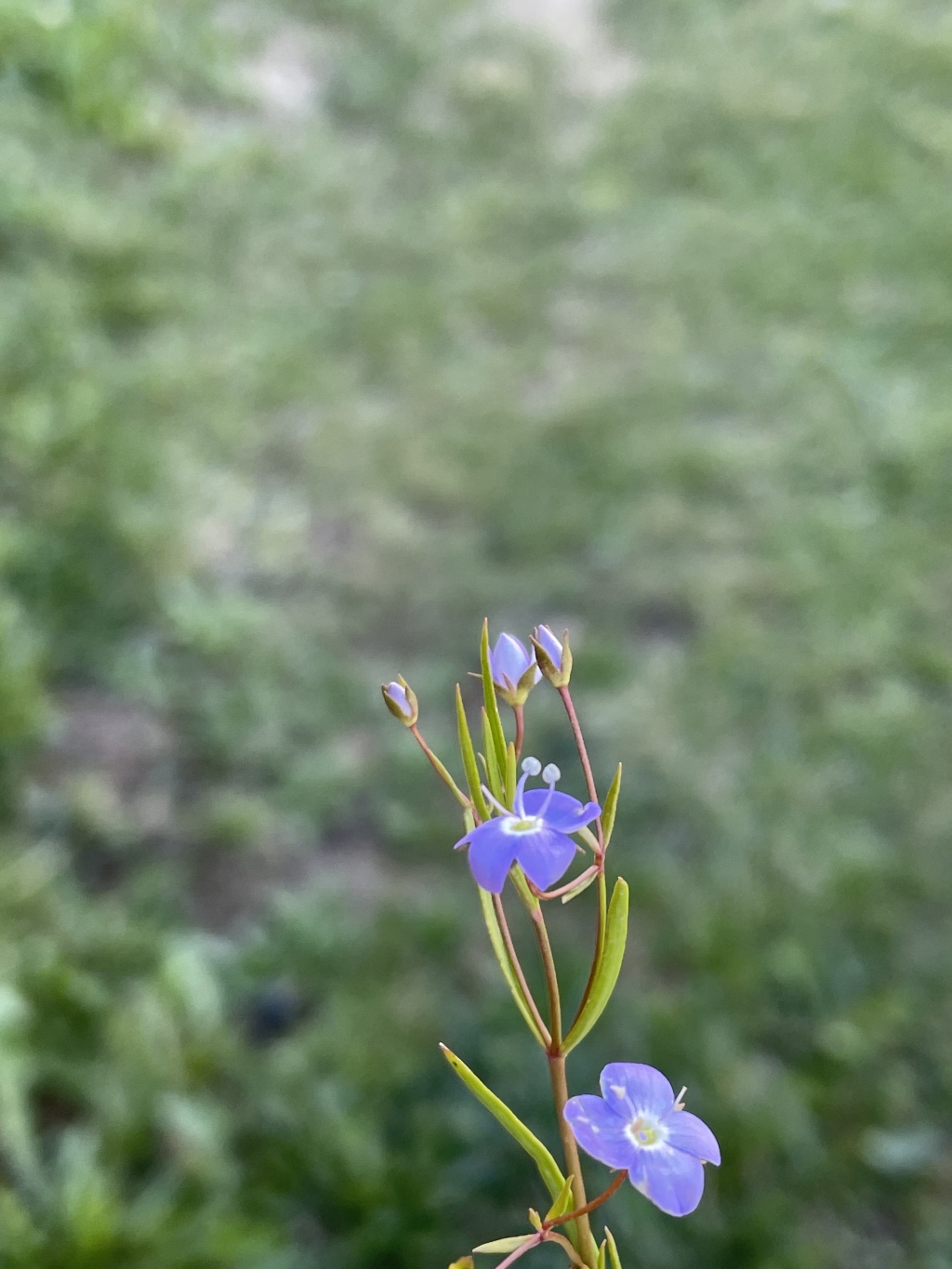Veronica subtilis
B.G.Briggs & Ehrend.Rhizomatous perennial; rhizomes to c. 25 cm long; flowering stems very slender or almost filiform, (4–)10–25(–35) mm long, hairs more or less inconspicuous, in lateral bands, c. 0.1 mm, papillose, recurved, rarely absent. Leaves sessile, mostly linear, (7–)11–25(–30) mm long, (0.5–)0.8–2(–2.5) mm wide, apex acuminate and apiculate, base attenuate, margins entire and somewhat revolute and thickened. Racemes lateral, (6–)15–55(–80) mm long with (1–)2–4(–6) flowers; peduncle (3–)10–35(–40) mm long; bracts to 6 mm long; pedicels usually 5–20 mm long. Calyx-lobes (3.5–)4–5 mm long, 0.6–1 mm wide in fruit, margins with very short papillose hairs; corolla 3.5–5(–8) mm long, mauve or pale blue. Capsule oblong, 2–3.5 mm long, 4–5 mm wide, emarginated, glabrous, slightly glossy; style 4–5 mm long. Flowers spring and summer.
GleP, VVP, VRiv, GipP, CVU, GGr, DunT, EGL, EGU, HSF, HNF, MonT, VAlp. Also SA, NSW, ACT. Occassional, in moist grassland and grassy woodland, often in montane or subalpine areas in the east (e.g. Mt Hotham, Nunniong Plateau, Cobberas Mountains), but near sea-level in the far south-west.
Veronica subtilis is tetraploid while the morphologically similar Veronica gracilis is octoploid (Briggs & Ehrendorfer 2006).
 Spinning
SpinningSynonyms
Briggs, B.G.; Ehrendorfer, F. (2006). New Australian species and typifications in Veronica sens. lat. (Plantaginaceae). . Telopea 11(3): 276–292.



